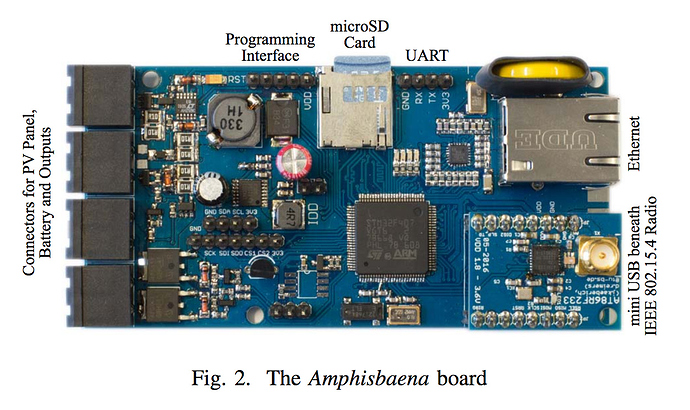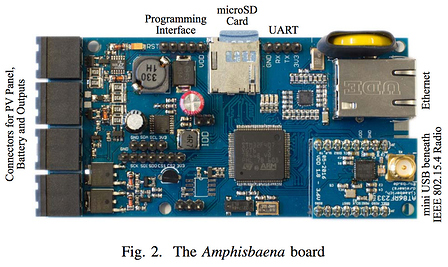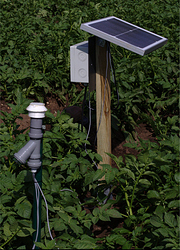Introduction
Low-power sensor node system based on DTN. By S. Rottmann and R. Hartung and J. Käberich and L. Wolf of TU Braunschweig fame. Published in 2017.
Scenario
- Battery-powered node outdoors.
- Several MB of data per day on SD card.
- At unknown time, tractor arrives forshort contact to collect data via DTN.
Abstract
In most Wireless Sensor Network deployments, the energy supply is a major challenge. Especially for nodes with high computational power or high bandwidth communication interfaces, the required size of batteries might increase to infeasible levels, even if the option of energy harvesting exists. For many use cases, some nodes are idling most of the time and transmitting only a few bytes from time to time. In this paper, we present a two-platform node consisting of a high-power and a low-power platform.
Both platforms are using the same Delay-Tolerant Networking (DTN) architecture and the same protocols. A novel concept offers the opportunity for both platforms to appear as a single node to communication partners. The high-power part is running a full-featured Linux operating system, the low power platform is built around an energy-efficient 32-bit microcontroller and is able to fulfill tasks, which would have required to wake up the high power node in a conventional setup.
Our system can increase the energy efficiency in WSN scenarios where the demand of bandwidth and computational performance is strongly fluctuating.
Details
Two-Platform Approach
- Low-power Board, 32 Bit MCU, IEEE 802.15.4
- RaspberryPi Single-Board Computer, Wireless LAN, only powered up when needed
Pictures
Resources
- Amphisbaena: A Two-Platform DTN Node
- https://www.ibr.cs.tu-bs.de/oa/Rottmann_MASS_2016.pdf
- https://www.ibr.cs.tu-bs.de/papers/rottmann-mass2016_slides.pdf
- https://www.researchgate.net/publication/312485022_Amphisbaena_A_Two-Platform_DTN_Node
- https://www.researchgate.net/publication/312484100_Demonstration_of_the_Wireless_Two-Platform_DTN_Node_Amphisbaena
- Amphisbaena Two-Platform DTN node vector file image - Free stock photo - Public Domain photo - CC0 Images
- http://edoc.sub.uni-hamburg.de/haw/volltexte/2017/4102/pdf/fgsn2017_reportV3.pdf


